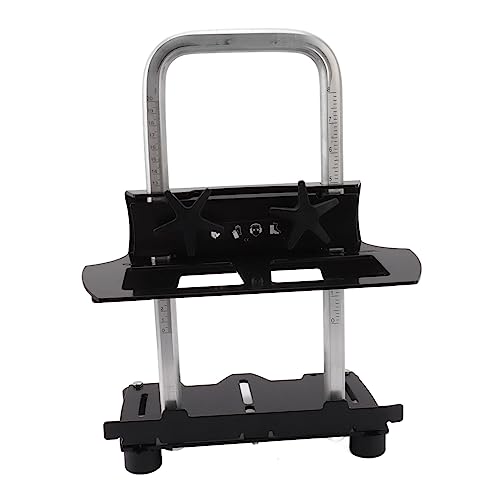Understanding Portable Sawmills: What They Are and Why You Need One
What Is a Portable Sawmill?
A portable sawmill is a versatile piece of equipment that allows users to turn logs into lumber right on location. This means that whether you’re a hobbyist looking to mill wood from trees in your backyard or a contractor needing to process timber on-site, a portable sawmill offers flexibility. Unlike traditional sawmills, which are often fixed in one spot, portable sawmills can be transported easily, allowing for milling jobs to be carried out wherever the wood is located.
Why Invest in a Portable Sawmill?
Investing in a portable sawmill can greatly enhance your woodworking capabilities. If you have access to raw logs, you can convert them into usable lumber while saving money compared to purchasing pre-milled wood. Additionally, having the ability to mill your own timber means you can choose specific dimensions and wood types, creating pieces that are bespoke and tailored to your projects.
Key Features to Consider When Choosing a Portable Sawmill
Size and Portability
When choosing a portable sawmill, size and weight are crucial factors. We need to evaluate how often and where you will use the sawmill. If you plan to move it often or work in various locations, opt for a lighter model that is easy to transport. Conversely, if the sawmill will remain in a fixed location, a larger, more robust model may be beneficial.
Power Source
Portable sawmills are powered primarily by either petrol or electricity. For remote areas where power outlets are unavailable, a petrol-powered sawmill can be more advantageous. On the other hand, electric sawmills tend to be quieter and require less maintenance. Consider your work environment and choose the power source that best fits your needs.
Cutting Capacity
Another critical feature is the cutting capacity, which refers to the maximum log diameter and length a sawmill can handle. If you’ll be processing large logs, ensure the sawmill you select has the specifications to accommodate this. Conversely, if you only need to mill smaller logs, a model with a lower cutting capacity may suffice.
Build Quality and Materials
The construction of the sawmill can influence its durability and efficiency. Look for sawmills made from high-quality materials, such as heavy-duty steel or aluminium, which can endure the rigours of milling and the elements. A well-constructed sawmill not only performs better but also lasts longer.
Comparing Top Portable Sawmill Brands: Our Insights
Brand Reputation and Customer Feedback
When considering which brand to purchase from, take into account the reputation of the manufacturer and customer reviews. Reliable brands often have better customer support and a more robust warranty, which can be invaluable. We recommend exploring various forums and reading reviews to gauge the experiences of other users.
Feature Comparison
Different brands may offer unique features or enhancements. Some may come equipped with advanced technology for increased efficiency, while others focus on providing a simple user-friendly experience. Compare specifications side by side to identify the brand that offers the best combination of features that align with your requirements.
Price Range and Value for Money
Prices for portable sawmills can vary widely. While it might be tempting to opt for the cheapest option, consider the long-term value it offers. A more expensive model might include essential features that save you time and money in the long run. We believe understanding what each price point includes can help you make a more informed decision.
How to Get Started with Your Portable Sawmill: A Beginner’s Guide
Setting-Up Your Portable Sawmill
Setting up your portable sawmill can initially seem daunting, but it becomes straightforward once you familiarise yourself with the instructions. Start by selecting a stable, level area to secure the sawmill. Proper alignment is crucial to ensuring the best cutting performance. Follow the manufacturer’s guidelines, and take your time to ensure everything is set correctly.
Choosing Your First Log
It’s best to begin with a log that is not too large or too difficult to work with. Look for a log that is straight and free from significant defects. This will make the milling process easier and yield better lumber quality, offering a great first experience.
Understanding the Milling Process
Take time to understand how to operate your sawmill, including how to adjust the cutting depth and speed. Familiarising yourself with the milling process will not only promote safety but also improve the quality of the lumber produced. Start with simple cuts before progressing to more complex ones.
Maintenance Tips for Keeping Your Portable Sawmill in Top Condition
Regular Cleaning
Keeping your portable sawmill clean is pivotal for its longevity. Regularly remove sawdust and debris from key components, as build-up can lead to performance issues. A clean sawmill runs smoother and more efficiently, ultimately improving your milling results.
Blade Maintenance
Blades are integral to the performance of your sawmill. Regularly inspect the blade for wear and tears, and ensure it’s sharpened appropriately. Dull blades require more work and can lead to uneven cuts, so sharpening them regularly will enhance cutting efficiency.
Storage and Protection
When not in use, storing your portable sawmill properly will protect it from the elements and prolong its lifespan. If you have a dedicated shed or covered area, keep it there. If not, invest in a weather-resistant cover to shield it from rain or direct sunlight.



















